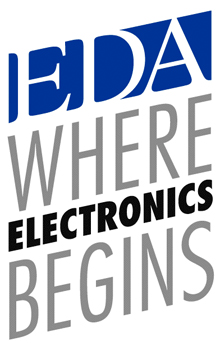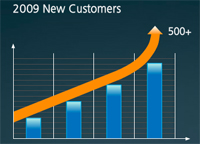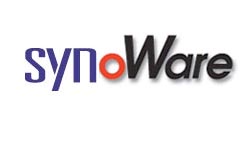 A few days ago I was asked by a friend what books I would recommend on putting together presentations. There are lots out there and I don’t claim to have looked at all of them. But here are five that I think are especially good.
A few days ago I was asked by a friend what books I would recommend on putting together presentations. There are lots out there and I don’t claim to have looked at all of them. But here are five that I think are especially good.
The first book isn’t actually about presentations specifically but is one aspect of a few slides in some presentations. It is Edward Tufte’s book “The Visual Display of Quantitative Information.” He has two more books which are also worth reading but they go over much of the material in this first book in more detail. Anyone who has ever put a graph or a table in a presentation (or in an article or white-paper for that matter) should read this book. It is full of wonderful examples of appalling presentation of data as well as some exemplary ones. Too many books on presentations show you some good ones without being brave enough to call out presentations that don’t work.
The next book is very analytical and contains a lot of data about what works and what does not in presentations. It is Andrew Abela’s “Advanced Presentations by Design.” One key finding is that if you put the points you want to make in bullets in your presentation, then when you present it (so you are speaking as well as showing the slides) it is actually less effective than simply showing the presentation and shutting up, or giving the speech and not showing the slides.
Next, two books that really are about putting together presentations. Garr Reynolds’s has a book called “PresentationZen” and Nancy Duarte has one called “slide:ology.” These two books somewhat cover the same material with slightly different perspectives. In fact the blurb on the back of each book is written by the other author. You probably don’t need both of them but you’ll need to look at them both to decide which one you feel most comfortable with. Both books carry on from the analysis I mentioned above, emphasizing that a presentation should be designed to reinforce visually what you are saying, not repeat it textually. A presentation is not a crux for the presenter, not a sort of teleprompter for not having rehearsed enough.
Finally there is Jerry Weissman’s “Presenting to Win.” This is complementary to the other books in that it focuses much less on the visual aspect of a presentation and much more on how to make a presentation tell a story. His track record and focus is putting together presentations for IPO roadshows, which are probably a type of presentation that has more money riding on it than anything else. But most of what he says is appropriate for other types of presentations.
Between these books you get instruction on how to create a compelling narrative in a presentation, how to maximize the visual impact of your presentation, how to display quantitative information compellingly, and more analysis that you probably care to read about what works and what doesn’t in presentations.
Two other resources that I think are good for presentations: any Steve Jobs keynote speech (look at the iPhone announcement if you only look at one) and many of the speakers at TED, which has a 20 minute time-limit and so forces speakers to maximize their impact and focus on the most important messages.

 Because I do some consulting for Oasys, I crossed paths with Rick Carlson who is an investor and advisor to them. I hadn’t realized that he was one of the people responsible for getting EDAC going.
Because I do some consulting for Oasys, I crossed paths with Rick Carlson who is an investor and advisor to them. I hadn’t realized that he was one of the people responsible for getting EDAC going. I met with Bob Smith, VP of product marketing for Magma, earlier this week, over a glass of wine and a lunch in a nice French bistro, to talk about the new product that they are introducing today. They are introducing a completely new from-the-ground-up timing engine called Tekton. I happen to know that Tekton is also typeface (font) designed by David Siegel, one of the first designers to take the web seriously.
I met with Bob Smith, VP of product marketing for Magma, earlier this week, over a glass of wine and a lunch in a nice French bistro, to talk about the new product that they are introducing today. They are introducing a completely new from-the-ground-up timing engine called Tekton. I happen to know that Tekton is also typeface (font) designed by David Siegel, one of the first designers to take the web seriously. One theme of this blog is that IC EDA is increasingly inspecting its own navel while the bulk of design is going on in the PCB and FPGA worlds (not to mention software). One company that is focused on this market is Altium. They used to be called Protel and were famous for a couple of things. Firstly, they were Australian. And secondly they sold their software at a very low price, partially because it wasn’t really state-of-the-art when compared with the more expensive packages. Today they are around $50M in revenue, with about 300 people world-wide, so that intermediate size where they are no longer small but still not the market share leader (in dollars). Worldwide they have about 40,000 individual licenses.
One theme of this blog is that IC EDA is increasingly inspecting its own navel while the bulk of design is going on in the PCB and FPGA worlds (not to mention software). One company that is focused on this market is Altium. They used to be called Protel and were famous for a couple of things. Firstly, they were Australian. And secondly they sold their software at a very low price, partially because it wasn’t really state-of-the-art when compared with the more expensive packages. Today they are around $50M in revenue, with about 300 people world-wide, so that intermediate size where they are no longer small but still not the market share leader (in dollars). Worldwide they have about 40,000 individual licenses. The annual EDAC CEO forecast meeting was last week. For a change, Synopsys had just reported their results earlier and so were not in their quiet period. Unfortunately, Wally had just entered his quiet period so, as he put it, he was only allowed to talk about the past.
The annual EDAC CEO forecast meeting was last week. For a change, Synopsys had just reported their results earlier and so were not in their quiet period. Unfortunately, Wally had just entered his quiet period so, as he put it, he was only allowed to talk about the past. As I have said repeatedly, the old model for innovation in EDA has died. The old model was largely that venture capitalists would fund teams of engineers, they would produce products to solve some problem that was looming on the horizon, one or two of them would turn out to be the market leaders, the big EDA companies would buy them for significant money and everyone was happy.
As I have said repeatedly, the old model for innovation in EDA has died. The old model was largely that venture capitalists would fund teams of engineers, they would produce products to solve some problem that was looming on the horizon, one or two of them would turn out to be the market leaders, the big EDA companies would buy them for significant money and everyone was happy. It must be something in the water in silicon valley right now. But no sooner have I written about VaST and Virtutech being acquired then Synopsys acquires CoWare as well. Since I never worked there, I don’t have any sort of inside track on what is going on. CoWare started life many years ago with a product called n2c, which stood for napkin to C, an attempt at turning high level system ideas into models quickly. They then did a deal with Cadence whereby they took over the old Comdisco SPW product line and the engineering team that supported it, in return for equity and royalties I think. Then more recently they decided to develop their own virtual platform technology which, I believe, is the heart of their business today. For a long time a lot of their revenue was service revenue in Japan (remember, they are the most advanced in system-level thinking so tended to be the first place where there was any revenue to be had) although I presume that is no longer the case.
It must be something in the water in silicon valley right now. But no sooner have I written about VaST and Virtutech being acquired then Synopsys acquires CoWare as well. Since I never worked there, I don’t have any sort of inside track on what is going on. CoWare started life many years ago with a product called n2c, which stood for napkin to C, an attempt at turning high level system ideas into models quickly. They then did a deal with Cadence whereby they took over the old Comdisco SPW product line and the engineering team that supported it, in return for equity and royalties I think. Then more recently they decided to develop their own virtual platform technology which, I believe, is the heart of their business today. For a long time a lot of their revenue was service revenue in Japan (remember, they are the most advanced in system-level thinking so tended to be the first place where there was any revenue to be had) although I presume that is no longer the case. I’d heard rumors that Intel was acquiring Virtutech and I presumed that the purpose was to put it together with Wind River that they acquired last year. I mentioned this in my post about VaST earlier this week but I wasn’t expecting to come back quite so soon to write about Virtutech. Anyway, it is now official,
I’d heard rumors that Intel was acquiring Virtutech and I presumed that the purpose was to put it together with Wind River that they acquired last year. I mentioned this in my post about VaST earlier this week but I wasn’t expecting to come back quite so soon to write about Virtutech. Anyway, it is now official,  Finally it is public knowledge that Synopsys has acquired VaST Systems Technology. I was VP marketing there for a bit over a year back when Graham was still CEO. Since I exercised my options when I left, I’ve been inundated with paperwork on the merger, although the acquiring company name was redacted everywhere it appeared (although everyone knew who it was). I don’t suppose I’m giving away too many secrets to reveal that I’m not going to get my money back. The common stock is lucky to get anything at all, but they did need bribe us a little to sign off on the merger.
Finally it is public knowledge that Synopsys has acquired VaST Systems Technology. I was VP marketing there for a bit over a year back when Graham was still CEO. Since I exercised my options when I left, I’ve been inundated with paperwork on the merger, although the acquiring company name was redacted everywhere it appeared (although everyone knew who it was). I don’t suppose I’m giving away too many secrets to reveal that I’m not going to get my money back. The common stock is lucky to get anything at all, but they did need bribe us a little to sign off on the merger.